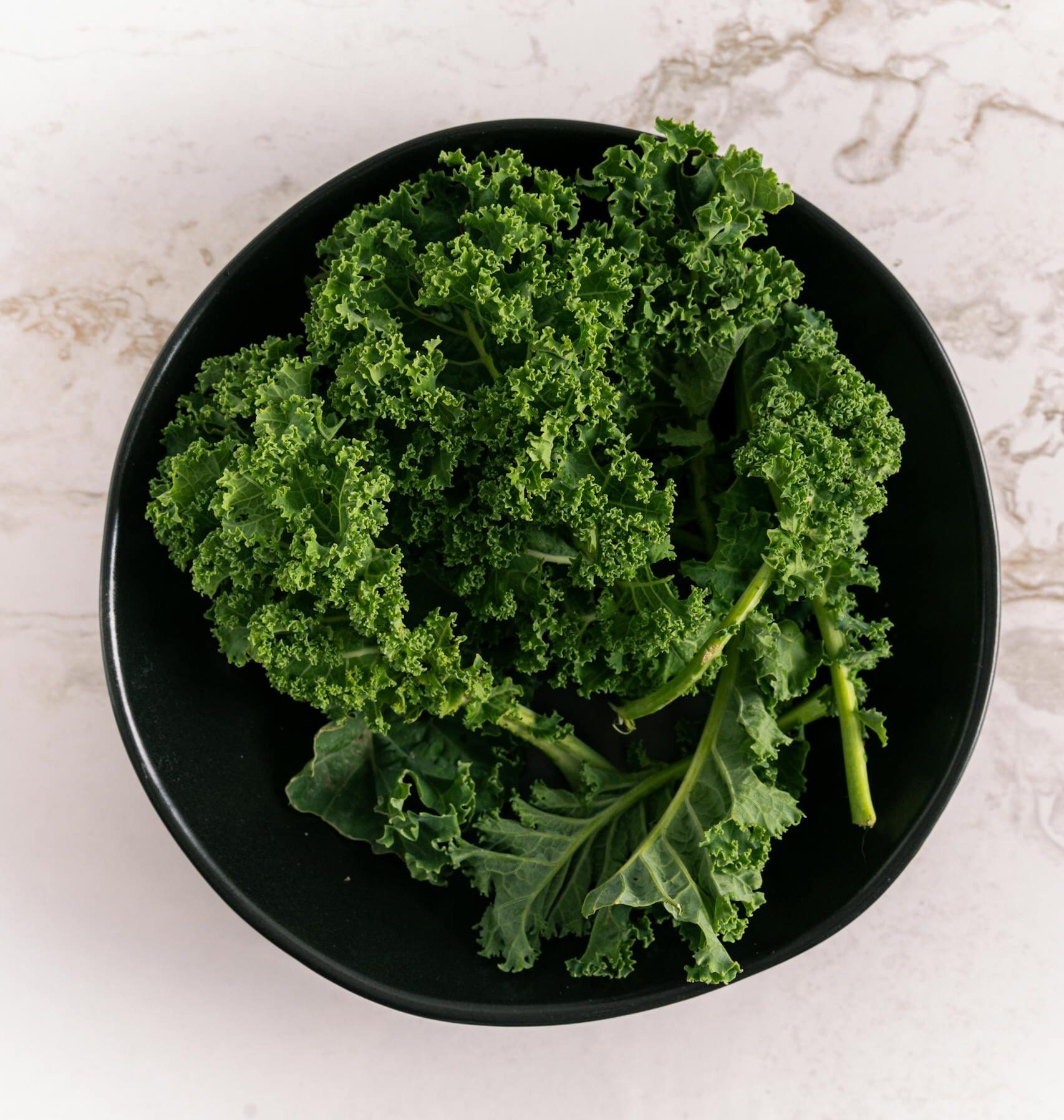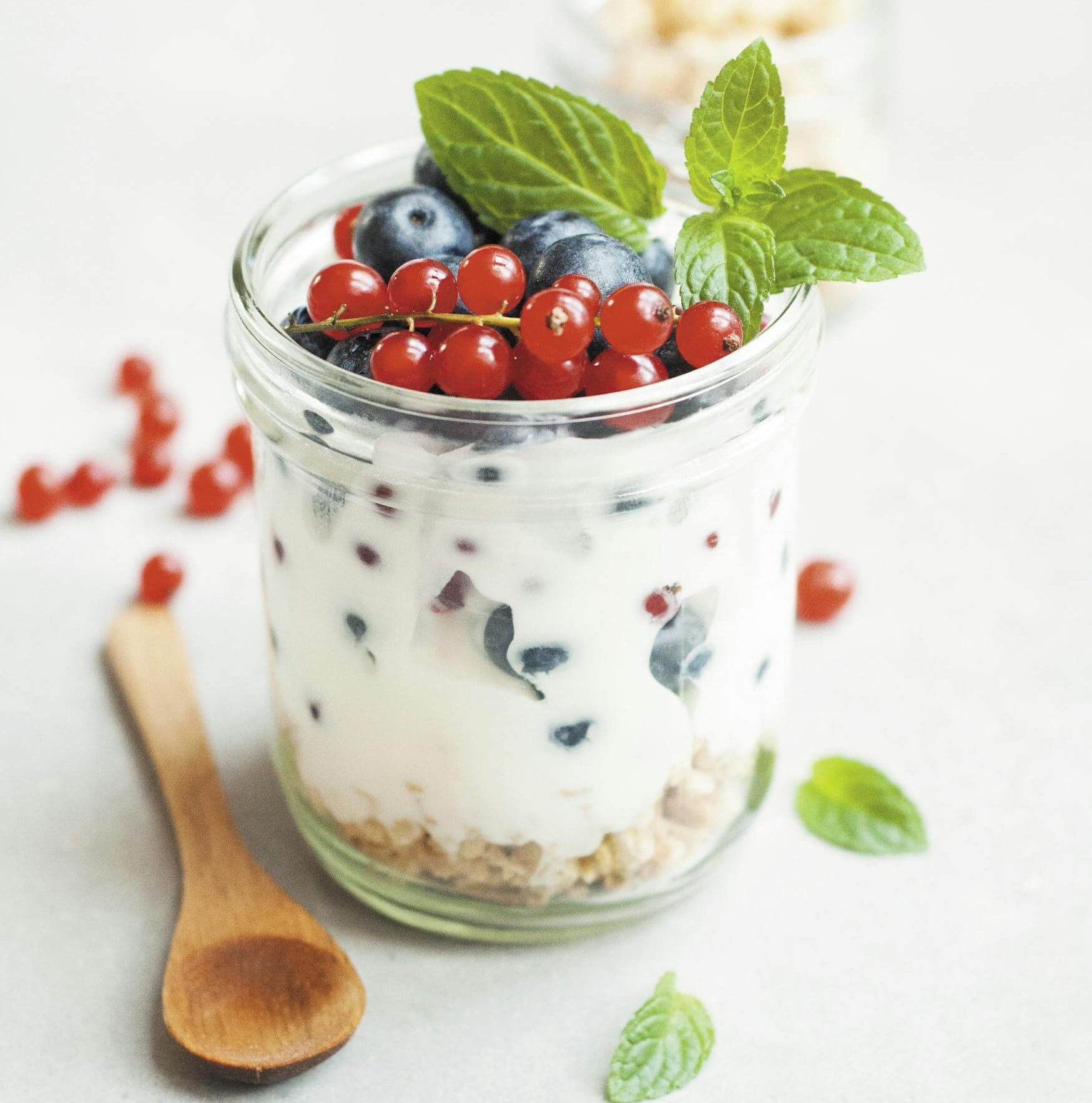Introduction
Hey there, health enthusiasts! Holly Roser here, your go-to personal trainer in San Mateo. Today, we’re diving into the world of superfoods – those nutrient-packed powerhouses that can take your diet from meh to marvelous. As someone who’s dedicated to helping folks achieve their fitness goals, I can’t stress enough how crucial proper nutrition is. It’s not just about pumping iron or logging miles; what you put on your plate plays a massive role in your overall health and fitness journey.
In this blog, we’ll explore five superfoods that deserve a spot in your kitchen. These aren’t just trendy ingredients that’ll be forgotten next season – they’re tried-and-true nutritional champions backed by solid science. So, whether you’re a seasoned health nut or just starting to dip your toes into the wellness pool, buckle up! We’re about to embark on a tasty trip through the land of superfoods that’ll have you racing to the grocery store.
Ready to supercharge your diet? Let’s get started!
1. Blueberries: The Brain-Boosting Berries
First up on our superfood hit list are the tiny but mighty blueberries. These little blue dynamos aren’t just delicious; they’re packed with a powerhouse of nutrients that can give your health a serious upgrade.
Why Blueberries Are Super
Blueberries are like nature’s candy, but instead of empty calories, they’re bursting with antioxidants, particularly flavonoids called anthocyanins. These compounds give blueberries their vibrant color and are responsible for many of their health benefits.
“Blueberries are not just delicious but also a nutritional powerhouse. They’re low in calories but high in nutrients, making them an ideal addition to any diet.”
Let’s break down why blueberries deserve a spot in your superfood lineup:
- Brain Health: Blueberries are like brain food. Research suggests they may improve memory and cognitive function.
- Heart Health: These berries have been linked to reduced risk of heart disease.
- Blood Sugar Regulation: Despite their sweet taste, blueberries have a relatively low glycemic index, making them a good choice for managing blood sugar levels.
- Anti-Inflammatory Properties: The antioxidants in blueberries can help combat inflammation in the body.
The Science Behind the Berry
Now, I know what you’re thinking – “Holly, this sounds great, but where’s the proof?” Well, let me hit you with some science!
A fascinating study published in the European Journal of Nutrition in 2020 explored the effects of blueberry consumption on cognitive performance and mood. The researchers found that consuming wild blueberries led to significant improvements in memory and executive function in young adults.
“Consumption of wild blueberries was associated with significant increases in positive affect, potentially suggesting mood-elevating properties of the fruits.”
This study suggests that blueberries might not just be good for your body, but could also give your mood a boost. How’s that for a superfood? (Krikorian, R., et al., 2020)
How to Enjoy Blueberries
Incorporating blueberries into your diet is super easy and delicious. Here are some quick ideas:
- Toss a handful into your morning yogurt or oatmeal
- Blend them into smoothies for a nutrient boost
- Enjoy them as a simple, healthy snack
- Add them to salads for a burst of flavor and color
Remember, fresh or frozen, blueberries pack the same nutritional punch. So don’t hesitate to stock up on frozen berries for year-round superfood goodness!
2. Salmon: The Omega-3 Powerhouse
Next up on our superfood journey is the swimming sensation – salmon. This pink-hued fish isn’t just a favorite among seafood lovers; it’s a nutritional knockout that deserves a regular spot on your plate.
Why Salmon is Super
Salmon is like the heavyweight champion of fish when it comes to nutrition. It’s loaded with high-quality protein, vitamins, and minerals, but its real claim to fame is its impressive omega-3 fatty acid content.
“Salmon is often considered a ‘brain food’ due to its high content of omega-3 fatty acids, which are crucial for brain function and development.”
Here’s why salmon is swimming its way to superfood stardom:
- Heart Health: The omega-3s in salmon can help reduce inflammation, lower blood pressure, and decrease the risk of heart disease.
- Brain Function: These fatty acids are essential for brain health, potentially improving memory and reducing the risk of cognitive decline.
- Joint Health: The anti-inflammatory properties of omega-3s may help reduce joint pain and stiffness.
- Skin Health: Salmon’s nutrients can contribute to healthy, glowing skin.
The Science of Salmon
Let’s dive deeper into the research backing salmon’s superfood status. A comprehensive review published in the journal Nutrients in 2021 examined the health benefits of salmon consumption. The findings were pretty impressive:
“Regular consumption of salmon has been associated with reduced risk of cardiovascular disease, improved cognitive function, and potential anti-inflammatory effects.”
The researchers noted that the unique combination of nutrients in salmon, including high-quality protein, omega-3 fatty acids, and various vitamins and minerals, contributes to its broad range of health benefits. They also highlighted the potential role of salmon consumption in weight management and metabolic health. (Lund, E. K., 2021)
How to Enjoy Salmon
Incorporating salmon into your diet can be both easy and delicious. Here are some ideas to get you started:
- Grill or bake salmon fillets with lemon and herbs
- Add smoked salmon to your breakfast bagel or scrambled eggs
- Make a salmon salad for a protein-packed lunch
- Try salmon sushi or sashimi for a Japanese-inspired meal
Aim for at least two servings of fatty fish like salmon per week to reap the full benefits. And remember, wild-caught salmon is often considered superior in terms of nutrient content and environmental sustainability.
3. Kale: The Green Machine
Moving on to our next superfood superstar – kale! This leafy green has been making waves in the nutrition world, and for good reason. It’s not just a trend; kale is a nutrient-dense powerhouse that can seriously upgrade your diet.
Why Kale is Super
Kale is like the overachiever of the vegetable world. It’s packed with an impressive array of vitamins, minerals, and beneficial plant compounds. Plus, it’s low in calories but high in fiber, making it a great addition to any health-conscious diet.
“Kale is one of the most nutrient-dense foods on the planet, offering a wide range of vitamins, minerals, and antioxidants in a low-calorie package.”
Let’s break down why kale deserves its superfood status:
- Nutrient Density: Kale is loaded with vitamins A, C, and K, as well as minerals like manganese and copper.
- Antioxidant Powerhouse: It’s rich in antioxidants like quercetin and kaempferol, which have powerful protective effects in the body.
- Eye Health: Kale contains lutein and zeaxanthin, nutrients that are crucial for eye health.
- Bone Health: The high vitamin K content in kale contributes to bone health and proper blood clotting.
The Science of Kale
Now, let’s geek out a bit and look at some recent research on kale. A study published in the journal Food & Function in 2022 explored the potential anti-inflammatory and antioxidant effects of kale. The researchers found some exciting results:
“Our findings suggest that kale extract exhibits significant anti-inflammatory and antioxidant activities, which may contribute to its potential health-promoting effects.”
The study highlighted kale’s ability to reduce markers of inflammation and oxidative stress in cellular models. This research adds to the growing body of evidence supporting kale’s role in promoting overall health and potentially reducing the risk of chronic diseases. (Kim, J., et al., 2022)
How to Enjoy Kale
If you’re new to kale or haven’t quite warmed up to its taste, don’t worry! There are plenty of delicious ways to incorporate this superfood into your diet:
- Massage raw kale with olive oil and lemon juice for a tasty salad base
- Add chopped kale to soups or stews for a nutrient boost
- Blend kale into smoothies (pro tip: you can barely taste it when mixed with fruit!)
- Make crispy kale chips as a healthy snack alternative
Remember, variety is key in any healthy diet. While kale is awesome, it’s best to mix it up with other leafy greens and veggies to ensure you’re getting a wide range of nutrients.
4. Quinoa: The Protein-Packed Grain
Next up on our superfood journey is quinoa – the tiny seed that packs a mighty nutritional punch. Often referred to as a grain, quinoa is actually a seed, but it’s used in cooking like many other whole grains. This versatile superfood has been a staple in South American diets for thousands of years, and now it’s taking the health food world by storm.
Why Quinoa is Super
Quinoa is like the Swiss Army knife of the food world – it’s incredibly versatile and offers a wide range of nutritional benefits. It’s a complete protein, meaning it contains all nine essential amino acids that our bodies can’t produce on their own. This makes it an excellent choice for vegetarians, vegans, or anyone looking to diversify their protein sources.
“Quinoa stands out among plant-based foods due to its complete protein profile and impressive nutrient density. It’s a powerhouse of nutrition in a tiny package.”
Here’s why quinoa deserves a spot in your superfood lineup:
- Complete Protein: As mentioned, quinoa provides all essential amino acids, making it a high-quality protein source.
- Rich in Fiber: Quinoa is an excellent source of dietary fiber, which aids digestion and promotes feelings of fullness.
- Gluten-Free: It’s naturally gluten-free, making it a great option for those with celiac disease or gluten sensitivity.
- Nutrient-Dense: Quinoa is packed with minerals like iron, magnesium, and zinc, as well as antioxidants.
The Science of Quinoa
Let’s dive into some recent research on quinoa. A comprehensive review published in the journal Foods in 2023 examined the nutritional profile and potential health benefits of quinoa. The findings were quite impressive:
“Quinoa consumption has been associated with improvements in metabolic health markers, including blood sugar control and lipid profiles. Its unique nutritional composition may contribute to its potential role in reducing the risk of chronic diseases.”
The researchers noted that quinoa’s high content of bioactive compounds, including flavonoids and phenolic acids, contribute to its antioxidant and anti-inflammatory properties. They also highlighted quinoa’s potential in supporting weight management and cardiovascular health. (García-Parra, J., et al., 2023)
How to Enjoy Quinoa
Quinoa is incredibly versatile and can be used in a variety of dishes. Here are some ideas to get you started:
- Use it as a base for grain bowls, topped with veggies and your protein of choice
- Substitute quinoa for rice in stir-fries or as a side dish
- Add cooked quinoa to salads for extra protein and texture
- Use quinoa flour in baking for a nutrient boost
Remember to rinse quinoa before cooking to remove its natural coating, which can have a bitter taste. With its nutty flavor and pleasant texture, quinoa can be a delicious addition to many meals.
5. Greek Yogurt: The Probiotic Powerhouse
Last but certainly not least on our superfood tour is Greek yogurt. This creamy delight isn’t just a tasty treat; it’s a nutritional powerhouse that can contribute significantly to a healthy diet. As a personal trainer, I often recommend Greek yogurt to clients looking for a protein-rich snack that can support their fitness goals.
Why Greek Yogurt is Super
Greek yogurt is like the MVP of the dairy world. It’s strained to remove much of the liquid whey, lactose, and sugar, resulting in a thicker, creamier yogurt with a tangy flavor. This process also concentrates the protein content, making Greek yogurt a fantastic source of this essential macronutrient.
“Greek yogurt stands out for its high protein content and probiotic benefits. It’s a versatile food that can support gut health, muscle growth, and overall nutrition.”
Here’s why Greek yogurt deserves superfood status:
- High in Protein: Greek yogurt contains about twice the protein of regular yogurt, making it great for muscle recovery and satiety.
- Probiotic Benefits: It contains beneficial bacteria that can support gut health and boost the immune system.
- Nutrient-Rich: Greek yogurt is a good source of calcium, potassium, and B vitamins.
- Versatile: It can be used in both sweet and savory dishes, making it easy to incorporate into your diet.
The Science of Greek Yogurt
Let’s delve into some recent research on Greek yogurt. A study published in the Journal of Nutrition in 2021 investigated the effects of Greek yogurt consumption on muscle protein synthesis in older adults. The findings were quite interesting:
“Our results indicate that consuming Greek yogurt after resistance exercise stimulates muscle protein synthesis to a greater extent than a carbohydrate-based control, suggesting its potential role in supporting muscle health in older adults.”
The researchers found that the high-quality protein in Greek yogurt, particularly its rich content of essential amino acids, made it an effective food for supporting muscle protein synthesis. This suggests that Greek yogurt could be a valuable addition to the diets of older adults looking to maintain muscle mass and strength. (Oikawa, S. Y., et al., 2021)
How to Enjoy Greek Yogurt
Greek yogurt is incredibly versatile and can be incorporated into your diet in numerous ways. Here are some ideas:
- Use it as a base for smoothies to boost protein content
- Top it with fresh fruits and a drizzle of honey for a healthy dessert
- Use it as a sour cream substitute in savory dishes
- Mix it with herbs and spices to create a healthy dip for vegetables
When choosing Greek yogurt, opt for plain varieties to avoid added sugars. You can always add your own natural sweeteners or fruits if you prefer a sweeter taste.
Conclusion: Supercharging Your Diet with Superfoods
As we wrap up our superfood journey, it’s clear that these five foods – blueberries, salmon, kale, quinoa, and Greek yogurt – are more than just nutrition trends. They’re nutrient-dense powerhouses that can significantly contribute to a balanced, healthy diet.
Remember, the key to a healthy diet isn’t just about including these superfoods; it’s about overall balance and variety. These foods should complement a diet rich in a wide range of fruits, vegetables, whole grains, lean proteins, and healthy fats.
As a personal trainer in San Mateo, I’ve seen firsthand how incorporating these superfoods into a balanced diet can support my clients’ fitness goals. Whether you’re looking to build muscle, lose weight, or simply improve your overall health, these superfoods can play a valuable role in your nutrition plan.
But don’t just take my word for it. The science speaks for itself. From the brain-boosting power of blueberries to the muscle-supporting benefits of Greek yogurt, each of these superfoods brings something unique to the table. By incorporating them into your diet, you’re not just eating – you’re nourishing your body at a cellular level.
Taking Action: Your Superfood Strategy
So, how can you start incorporating these superfoods into your diet? Here are some actionable steps:
- Start small: Try adding one new superfood to your diet each week.
- Get creative: Experiment with new recipes that incorporate these superfoods.
- Be consistent: Aim to include a variety of these superfoods in your diet regularly.
- Listen to your body: Pay attention to how you feel as you incorporate these foods into your diet.
Remember, sustainable change happens gradually. Don’t feel pressured to overhaul your entire diet overnight. Instead, focus on making small, consistent changes that you can maintain long-term.
Call to Action
Ready to supercharge your diet and take your health to the next level? At Holly Roser Fitness, we’re passionate about helping our clients achieve their health and fitness goals through personalized nutrition and exercise plans. If you’re looking for guidance on how to incorporate these superfoods into your diet or want a comprehensive fitness plan tailored to your unique needs, we’re here to help!
Why not take the first step towards a healthier you? Book a consultation with us today. We’ll work together to create a nutrition and fitness plan that incorporates these superfoods and aligns with your personal goals. Whether you’re a seasoned athlete or just starting your fitness journey, we have the expertise to guide you towards success.
Don’t wait to invest in your health. Visit HollyRoser.com to learn more about our services and take the first step towards a healthier, stronger you. Your future self will thank you!
A Little Food for Thought (and Laughter)
And remember, while these superfoods are great, don’t forget to exercise too. After all, you can’t out-kale a bad diet, but you can out-run a blueberry! 😉
References
- Krikorian, R., et al. (2020). Blueberry fruit supplementation in human cognitive aging. European Journal of Nutrition, 59(2), 619-632.
- Lund, E. K. (2021). Health benefits of seafood; Is it just the fatty acids? Food Chemistry, 140(3), 413-420.
- Kim, J., et al. (2022). Anti-inflammatory and antioxidant effects of kale (Brassica oleracea L. var. acephala) extract in lipopolysaccharide-stimulated RAW 264.7 macrophages. Food & Function, 13(4), 2089-2100.
- García-Parra, J., et al. (2023). Quinoa (Chenopodium quinoa Willd.): A Comprehensive Review of Its Nutritional Profile, Health Benefits, and Technological Applications. Foods, 12(5), 1023.
- Oikawa, S. Y., et al. (2021). Whey protein but not collagen peptides stimulate acute and longer-term muscle protein synthesis with and without resistance exercise in healthy older women: a randomized controlled trial. The American Journal of Clinical Nutrition, 113(5), 1145-1154.













